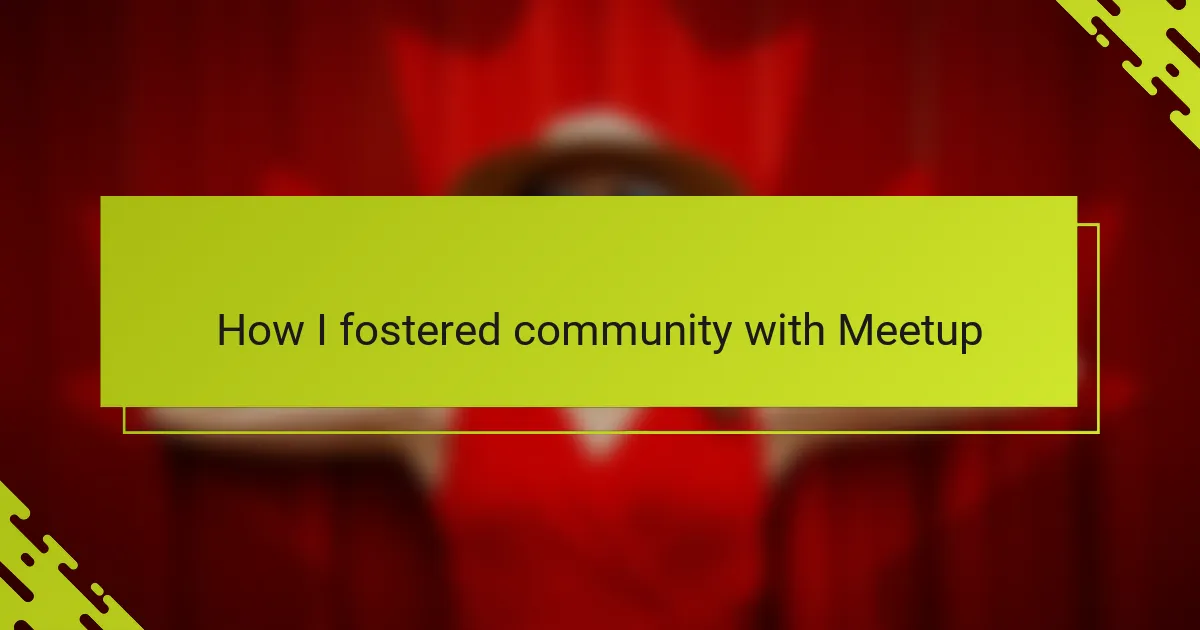Key takeaways
- Queer women culture emphasizes safety, vulnerability, and shared stories, fostering a strong sense of community.
- Meetup serves as an effective platform for creating localized, interest-based groups that enhance genuine connections.
- Inclusivity in Meetup groups involves clear communication, collaborative community guidelines, and diverse event formats to cater to different comfort levels.
- Building lasting connections relies on shared experiences, ongoing engagement, and creating an environment where individuals feel recognized and valued.
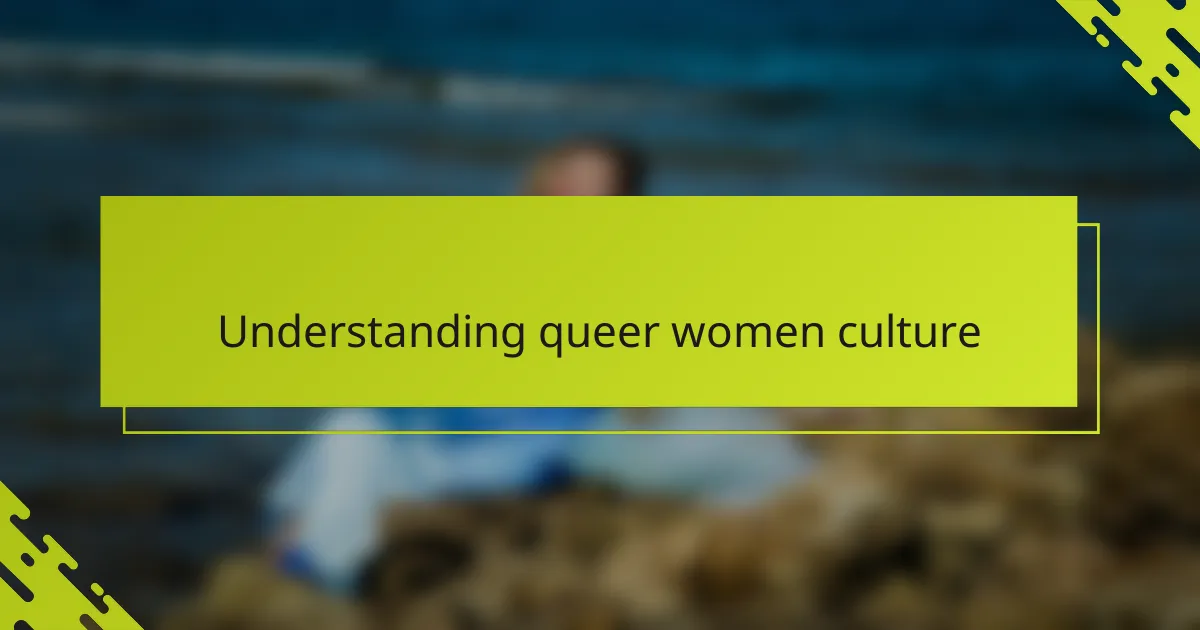
Understanding queer women culture
Queer women culture is a vibrant tapestry woven from diverse experiences, identities, and expressions. I’ve often found that understanding this culture means embracing both its rich history and its ever-evolving nature. Have you ever wondered what it feels like to belong somewhere not just by identity, but by shared stories and struggles?
From my experience, queer women’s spaces carry an unspoken sense of safety and authenticity. It’s where vulnerability isn’t just accepted, it’s celebrated. I recall attending a gathering where laughter and tears flowed freely, reminding me how deeply connection roots itself in these moments.
The nuances within queer women’s culture invite us to listen closely—to the language, the art, the activism. It’s a culture that defies easy labels, challenging me to continually rethink what community means. How often do we stop to truly appreciate the layers beneath the surface?
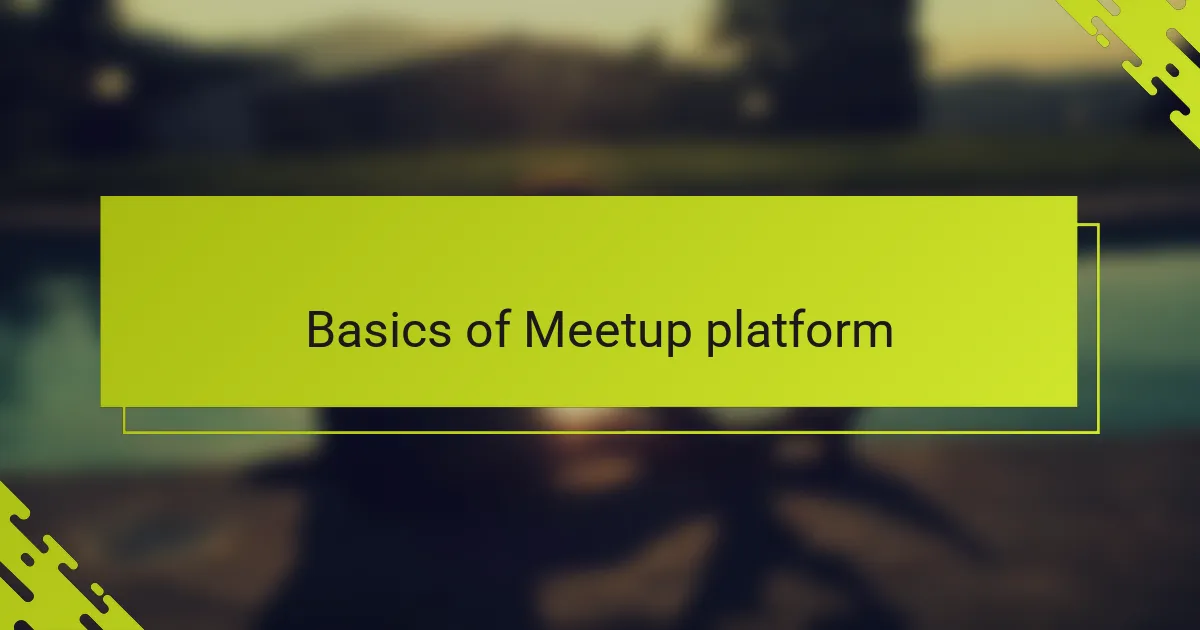
Basics of Meetup platform
Meetup is an online platform designed to bring people together around shared interests, making it a perfect tool for community-building. When I first explored it, I was struck by how simple it was to create groups and plan events, which felt like opening a door to countless possibilities. Have you ever clicked on a Meetup event and immediately sensed the potential for new connections?
What sets Meetup apart for me is its focus on locality and specificity. You can find — or start — a group tailored exactly to your identity or passion, which means you’re not just joining a generic crowd but a carefully curated space. I remember setting up my first queer women’s Meetup and feeling both nervous and hopeful, knowing that every RSVP meant someone seeking belonging just like me.
The platform also has tools that make organizing feel manageable, from messaging members to scheduling events without hassle. This ease allowed me to focus less on logistics and more on fostering genuine community moments. Isn’t it interesting how technology, when thoughtfully used, can enhance the heart of human connection?
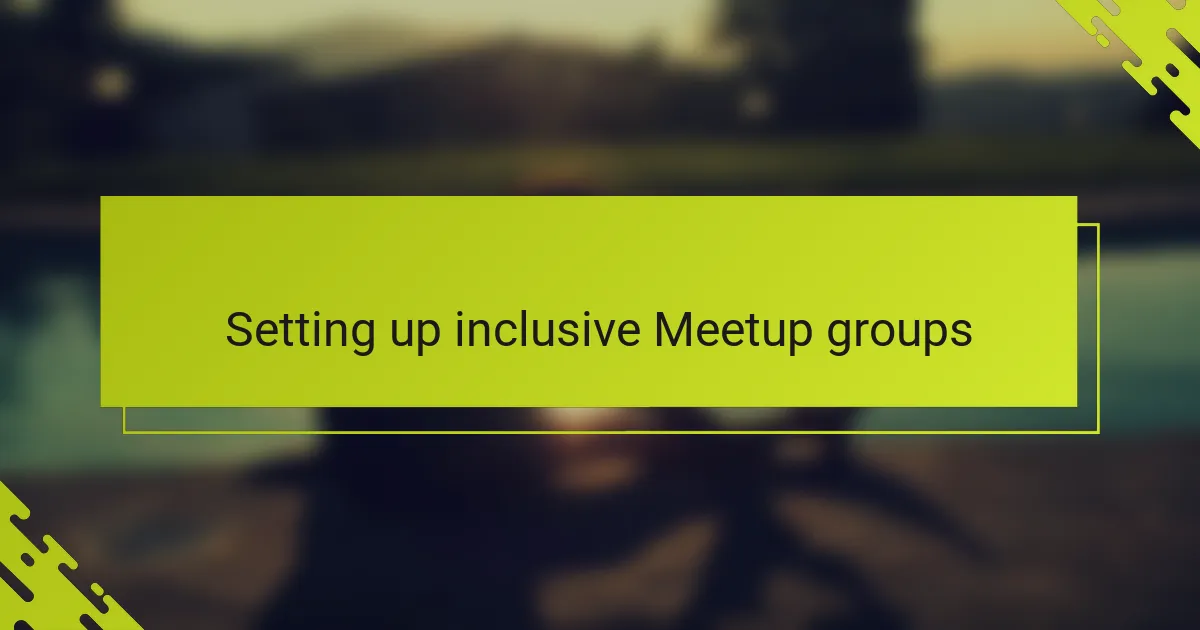
Setting up inclusive Meetup groups
Setting up an inclusive Meetup group meant to me more than just creating a space; it was about consciously inviting everyone to feel seen and heard. I learned early on that clear, welcoming language in descriptions and event titles can make a huge difference — it sets the tone before anyone even arrives. Have you ever noticed how a simple phrase like “all are welcome” can either feel empty or genuinely warm depending on how it’s expressed?
I also made it a point to establish community guidelines collaboratively, inviting members to share what makes them feel safe and respected. This process deepened my understanding of inclusion beyond buzzwords — it became a living practice that shaped how we interacted. Sometimes, I’d see members gently remind each other of these values, reinforcing a shared commitment that felt like a safety net.
Another lesson was recognizing the importance of diverse event formats to accommodate different comfort levels and social needs. Hosting quieter meetups alongside lively socials helped people with varying personalities and anxieties engage on their own terms. Have you ever been to a big event that left you drained? Offering smaller, more intimate gatherings changed that dynamic for us completely.
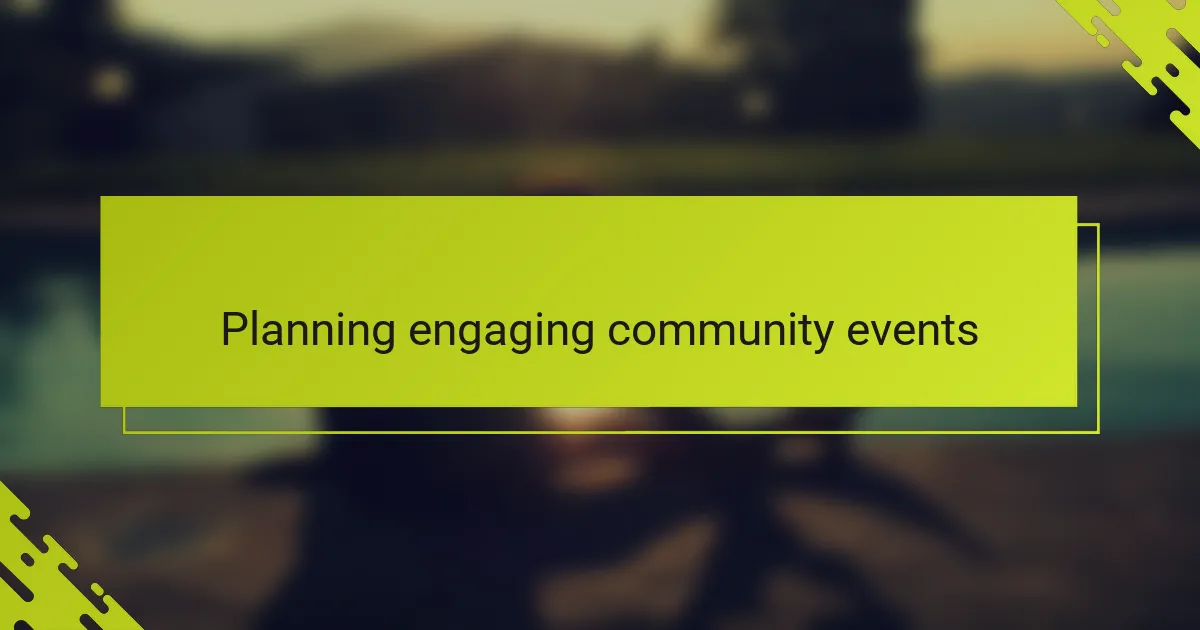
Planning engaging community events
When I started planning events, I quickly realized that engagement doesn’t just happen—it’s crafted with intention. Choosing activities that resonate with our community’s interests made all the difference. Have you ever noticed how a well-chosen theme or interactive element can turn a simple meetup into a memorable experience?
I found that mixing structured activities with open time for conversation allowed people to connect in ways that felt natural and unforced. Once, during a poetry sharing circle I organized, the energy shifted palpably as voices grew confident and stories unfolded. It reminded me that engagement blossoms when people feel both guided and free.
Timing and venue also played a crucial role. I learned to select spaces that felt safe and accessible, and to schedule events when busy schedules wouldn’t deter attendance. Isn’t it amazing how these thoughtful decisions can transform a gathering from “just another event” into a place people eagerly look forward to?
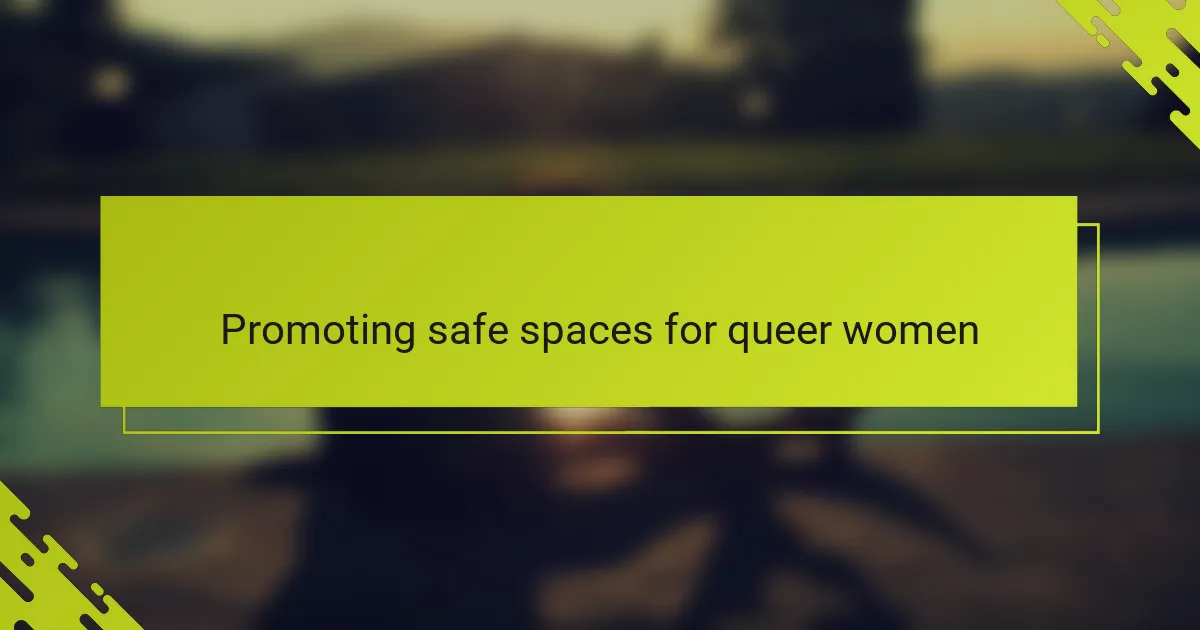
Promoting safe spaces for queer women
Creating safe spaces for queer women has always been my top priority when using Meetup. I’ve seen firsthand how explicitly stating our commitment to confidentiality and respect helped ease anxieties, especially for those new to these environments. Can you imagine the relief of walking into a room where your identity is not just accepted but actively protected?
I also found that openly addressing potential concerns—like how to handle unexpected guests or how we’ll support anyone facing discrimination—built trust from the very start. There was a moment when a newcomer shared how those clear assurances made all the difference for her feeling comfortable enough to participate fully. That kind of feedback is priceless.
Ensuring safety isn’t just about rules; it’s about creating an atmosphere where queer women feel empowered to express themselves without fear. Hosting pre-event check-ins and encouraging members to share their comfort levels became small rituals that, in my experience, wove a stronger safety net around our community. Have you experienced spaces where you could truly let your guard down? That’s the kind of sanctuary I strive to foster with each Meetup.
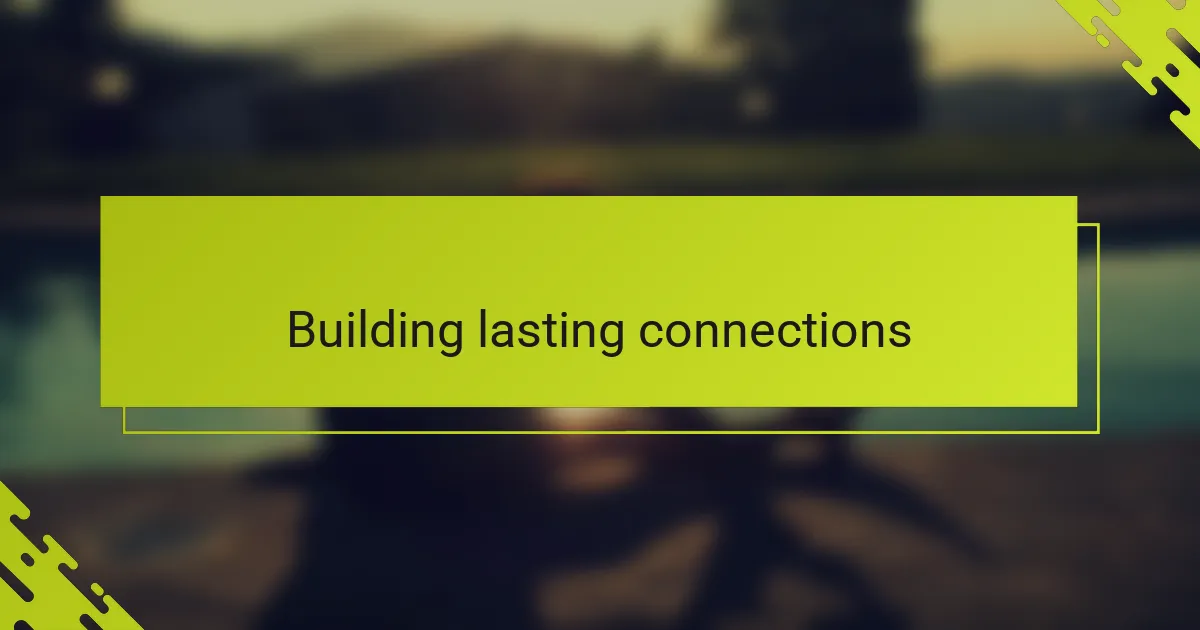
Building lasting connections
Building lasting connections means more than just exchanging names or social media handles; it’s about cultivating trust over time. I remember one particular meetup where two attendees who barely spoke at the start ended up co-hosting an event months later. That transformation showed me how patience and consistent presence can turn acquaintances into friends.
There’s something powerful about shared experiences that keep drawing people back—whether it’s a heartfelt conversation after an event or simply seeing familiar faces in a new setting. Don’t you find that returning to a space where you’re recognized gives you a sense of grounding? Those moments of recognition are like the glue that holds community together.
I also noticed that fostering these connections requires ongoing effort: follow-up messages, small check-ins, and creating informal opportunities to engage beyond scheduled events. It’s in these little touches that relationships deepen and communities thrive. Have you ever reached out to someone after a meetup and found that simple act sparked a meaningful friendship? That’s the magic I’ve come to cherish.
